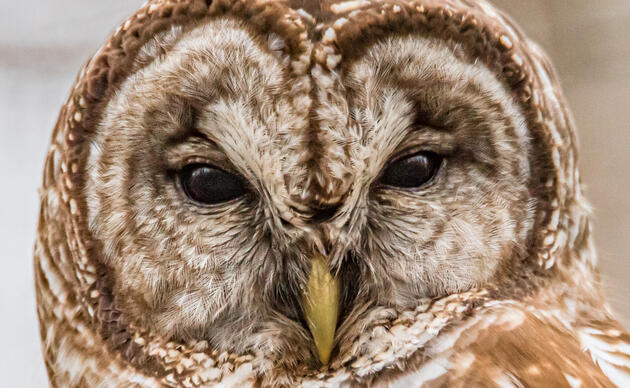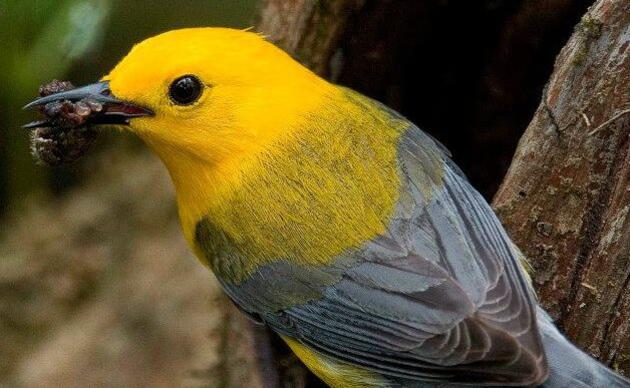Accessibility at Beidler Forest
At the Audubon Center at Francis Beidler Forest, one of our most important priorities is ensuring our facilities are accessible to everyone. Please read below about what to expect when visiting our site or joining one of our programs. If you require any further accommodations, please reach out to us directly by sending an email to beidler@audubon.org or calling 843-462-2150 (press 1 to speak with a staff member). We want to ensure that all people from all backgrounds have the opportunity to explore and enjoy Beidler Forest.
We know planning ahead makes for a better visit, so here's a quick, at-a-glance look at accessibility for our facilities, trails, and experiences. You'll find details on wheelchair access, restrooms, sensory factors and more - all in one place or more in-depth below as you scroll.
Experience/Feature |
WheelchairAccessible |
RestroomAccess |
SensoryConsiderations |
AgeRestrictions |
Notes |
|---|---|---|---|---|---|
|
Visitor Center |
Yes | Yes (ADA) | Calm, indoor space | None | Staff onsite for assistance |
| Boardwalk Trail | Yes (entire length) | No (not along trail) | Quiet, natural sounds | None | Manual and battery-powered wheelchairs allowed |
| Grassland/Woodland Trail | No | No | Uneven terrain, open field | None | Unpaved, natural trail |
| Firefly Nights | Yes | Yes | Low light (red lights only) | Recommended Ages: 10+ | No flashlights or photography |
| Nocturnal Family Forays | Yes | Yes | UV lights, nighttime sounds | Ages 5+ recommended | Stays on boardwalk |
| Canoe/Kayak Trips | No | Yes (visitor center only) | Water travel, heat, insects | Ages 12+ only | Physical demands, uneven access road |
| Public Restrooms | Yes (at visitor center) | - | Indoor, air-conditioned | None | Closest to parking |
| Wheelchair Loan | Yes (limited availability) | - | - | - | First-come, first-serve |
| Service Animals | Yes | Yes | - | - | Must be under control at all times |
For specific accomodations, visitors are encouraged to contact beidler@audubon.org.
Facilities
Parking & Entrance: The visitor center is accessed via a one-mile-long gravel driveway. Our parking lot is a one-way loop, and it includes 50+ gravel parking spots for small vehicles and 6 parking spots for buses and RVs. We have two handicap parking spots located in from front of the center. A slightly elevated concrete path leads from these two spaces to a ramp that then leads up to the center’s entrance. There are two entrance doors into the center; at present, neither open automatically.

Picnic Tables: We have a number of picnic tables scattered throughout our parking lot. Most are accessed via dirt paths off of our gravel parking area and width of these trails varies greatly. The back porch of the visitor center has bench seating that is easier to access, but no tables.
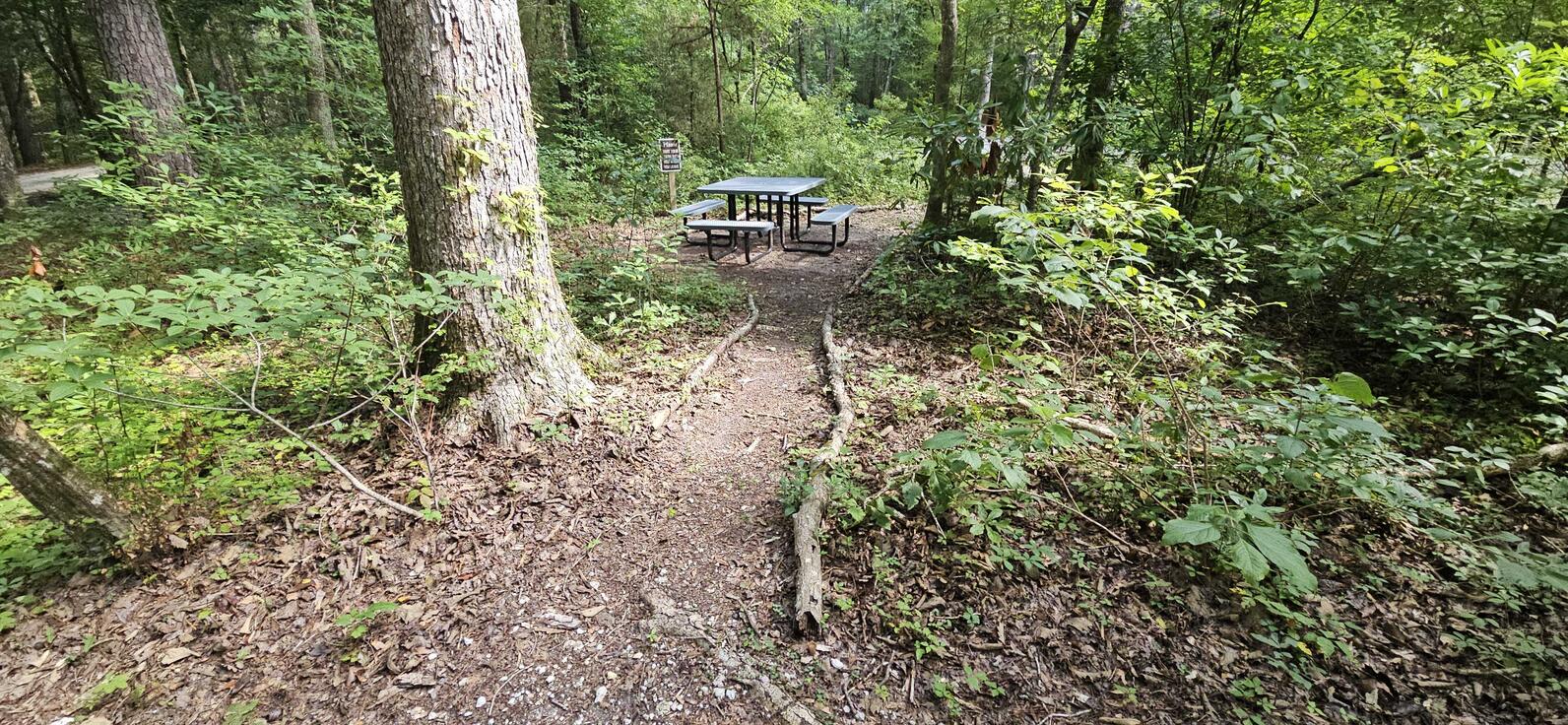
Visitor Center: There’s plenty of room in the center to move around as staff ensure to leave avenues open between furniture and gift shop displays when possible. There are a few transition areas on the ground that are approximately 1/2 inch tall. These are located at our front and back entrances, as well as one in the middle of the visitor center where tile transitions to vinyl flooring.
Restrooms: We have one ADA accessible stall in both of our bathrooms. There are no restrooms available out on the boardwalk or along our grassland/woodland trail.
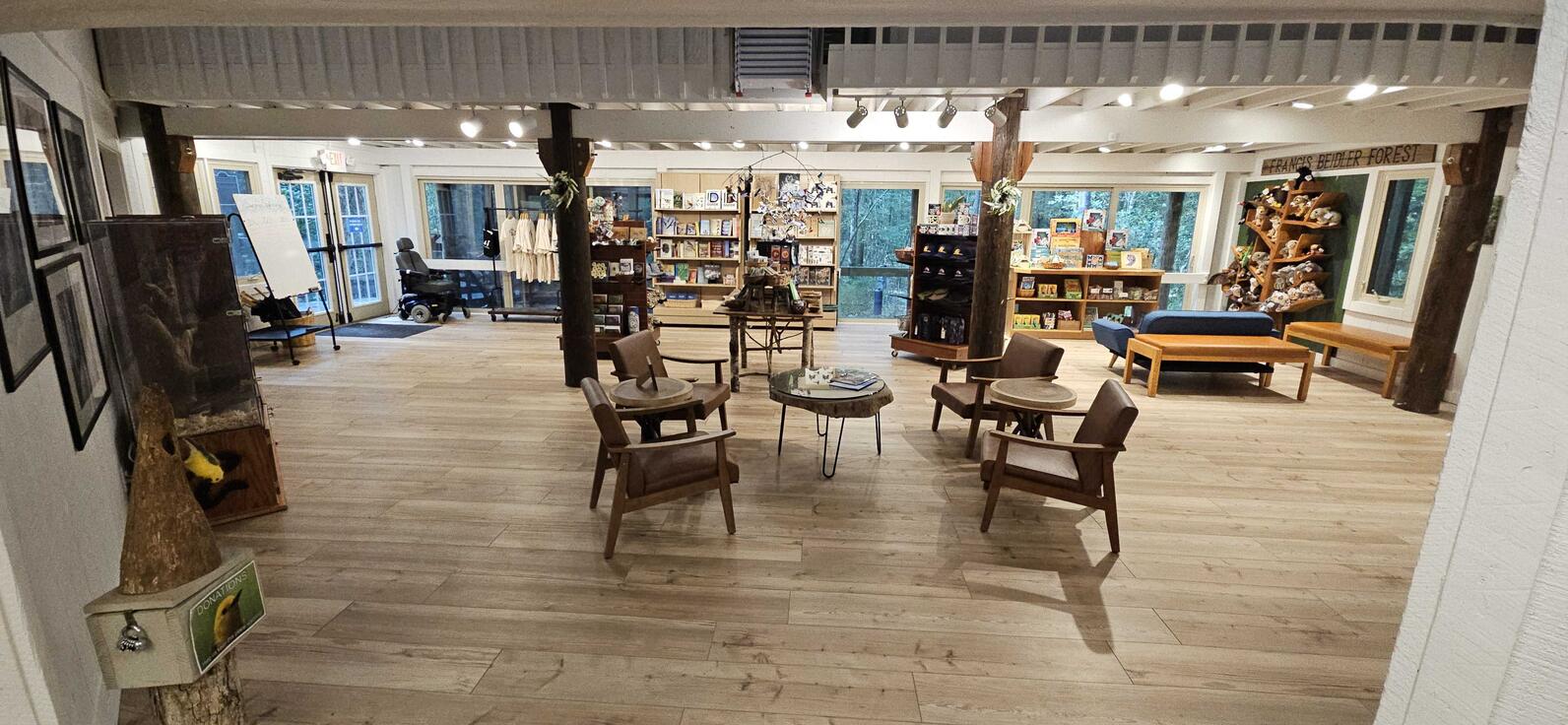
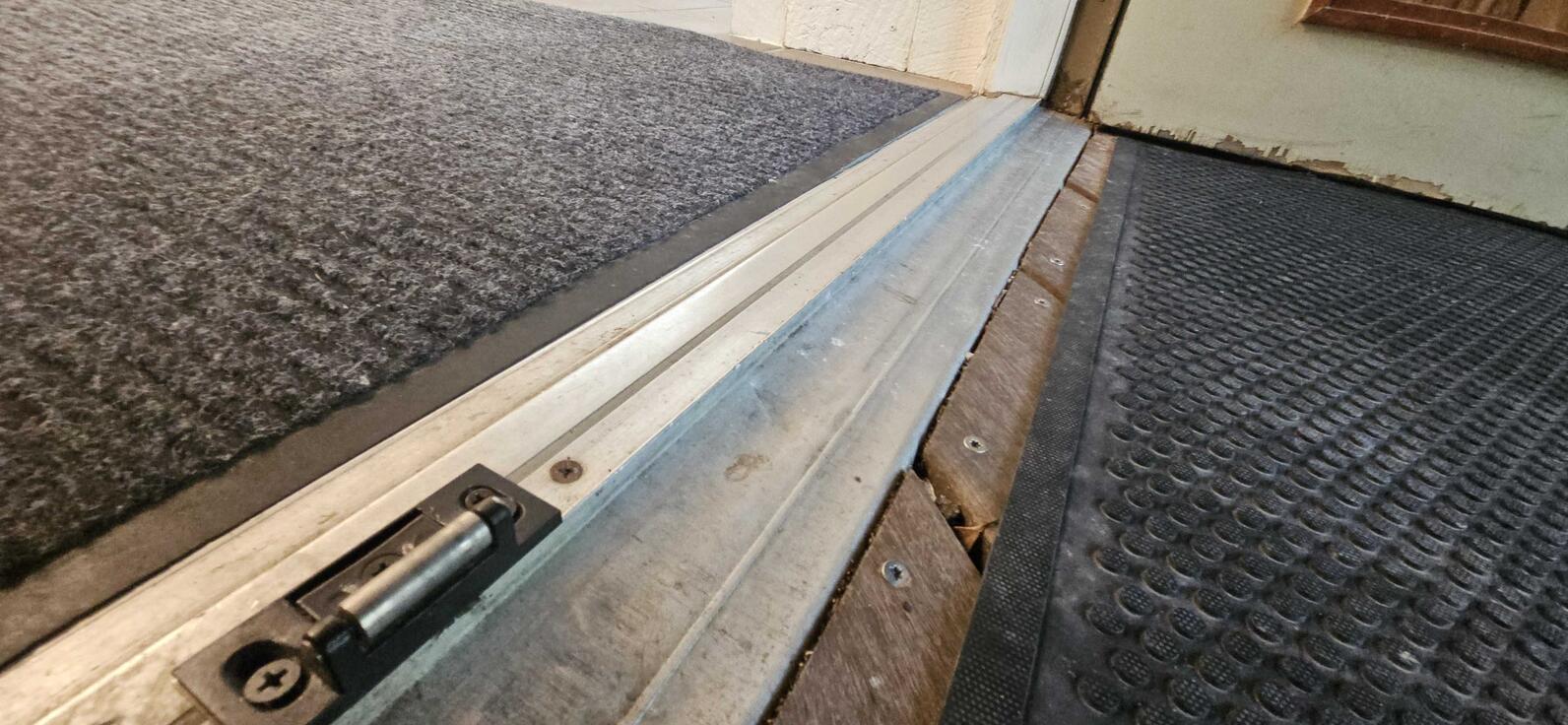
Equipment: We have an electric wheelchair, an electric scooter, and a push wheelchair. All you have to do is ask if they are available when you arrive, or call ahead of time and see if we can reserve one on the day you’d like to come. These three items are available on a first come, first serve basis.
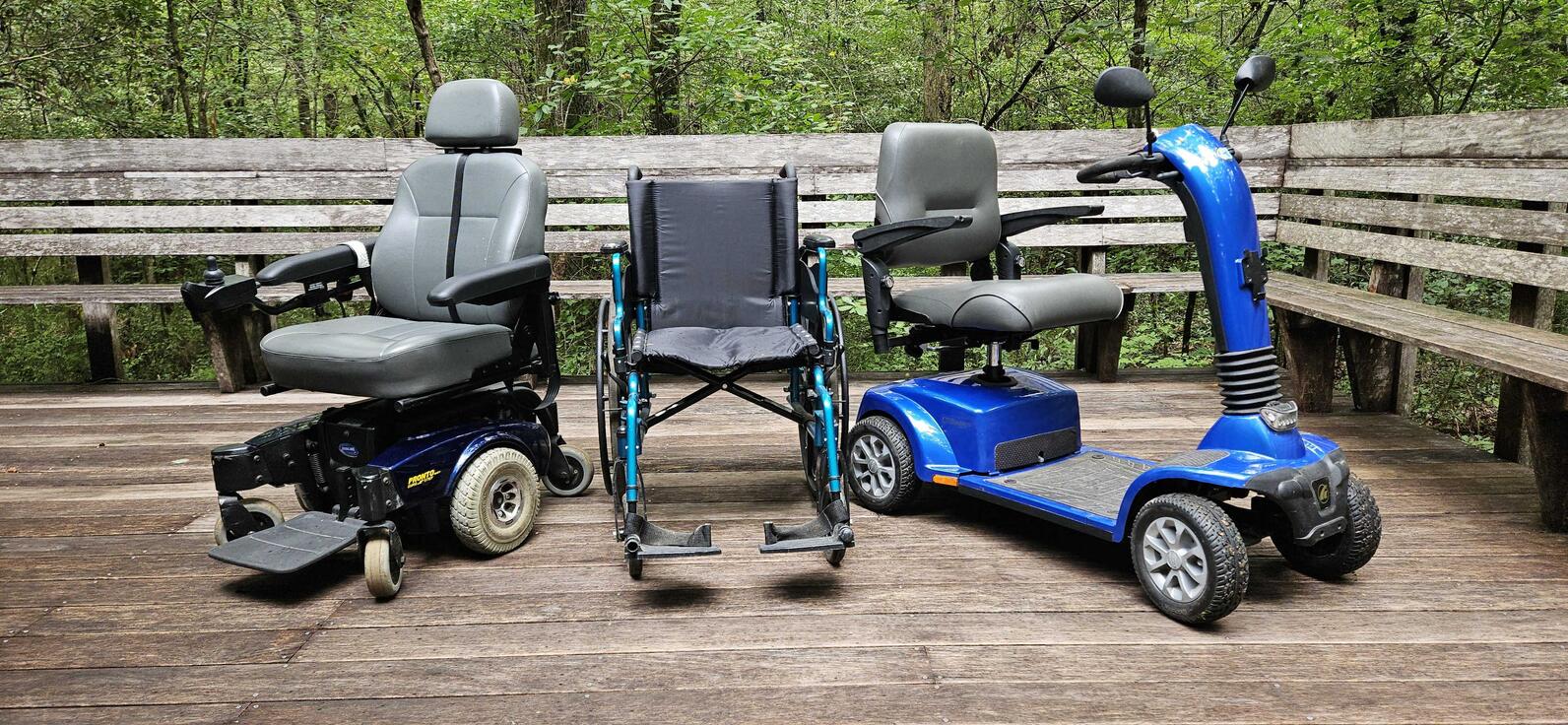
We also have binoculars that you can use, though we do ask to hold an ID at the front desk while you are using them on the boardwalk.
Boardwalk
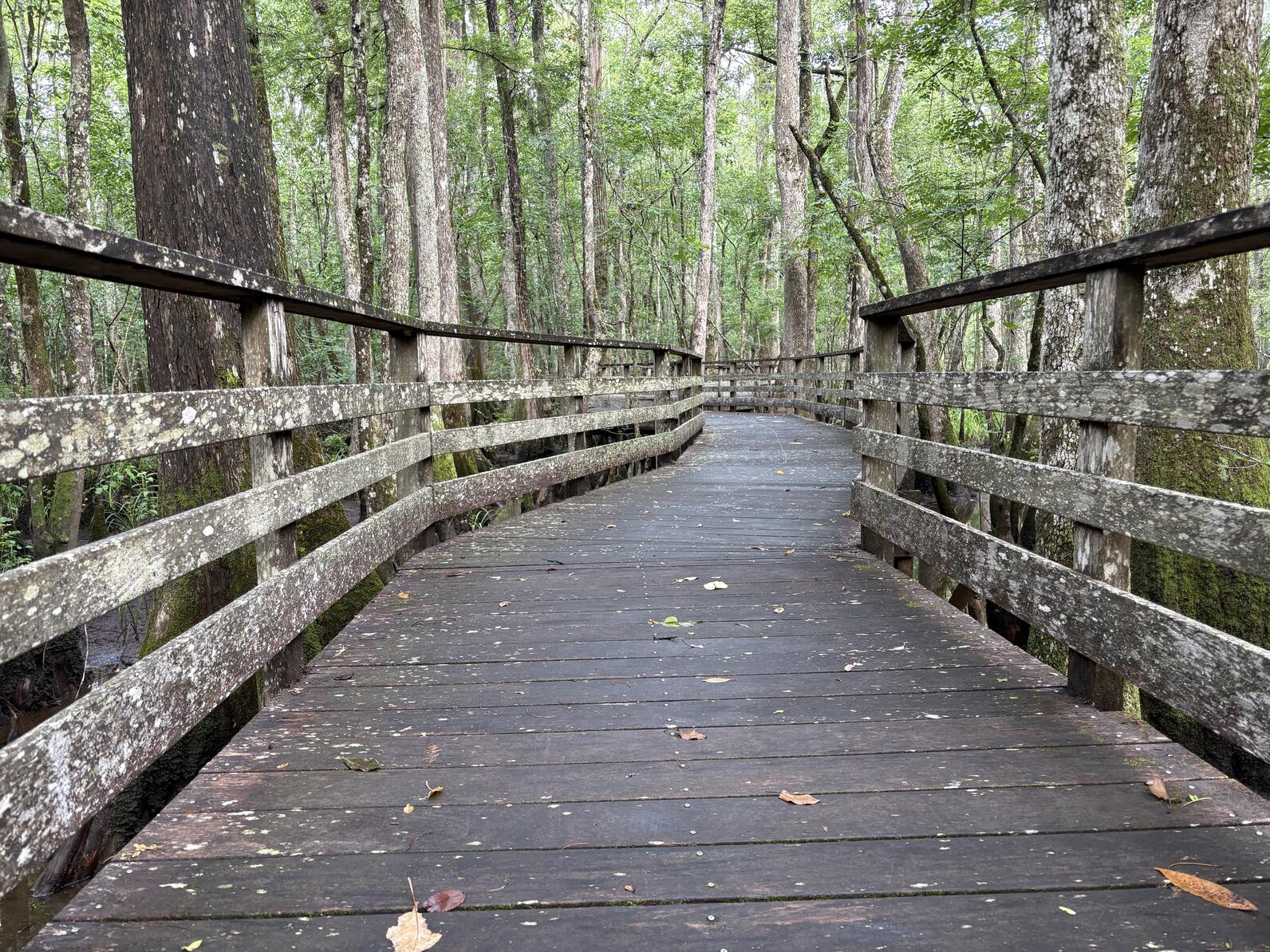
Our 1.75-mile boardwalk is ADA accessible. It's width is five feet wide or wider for the entire length. It is on average elevated a 1 to 6 feet above the ground and is mostly level, except for the front and back ramps.
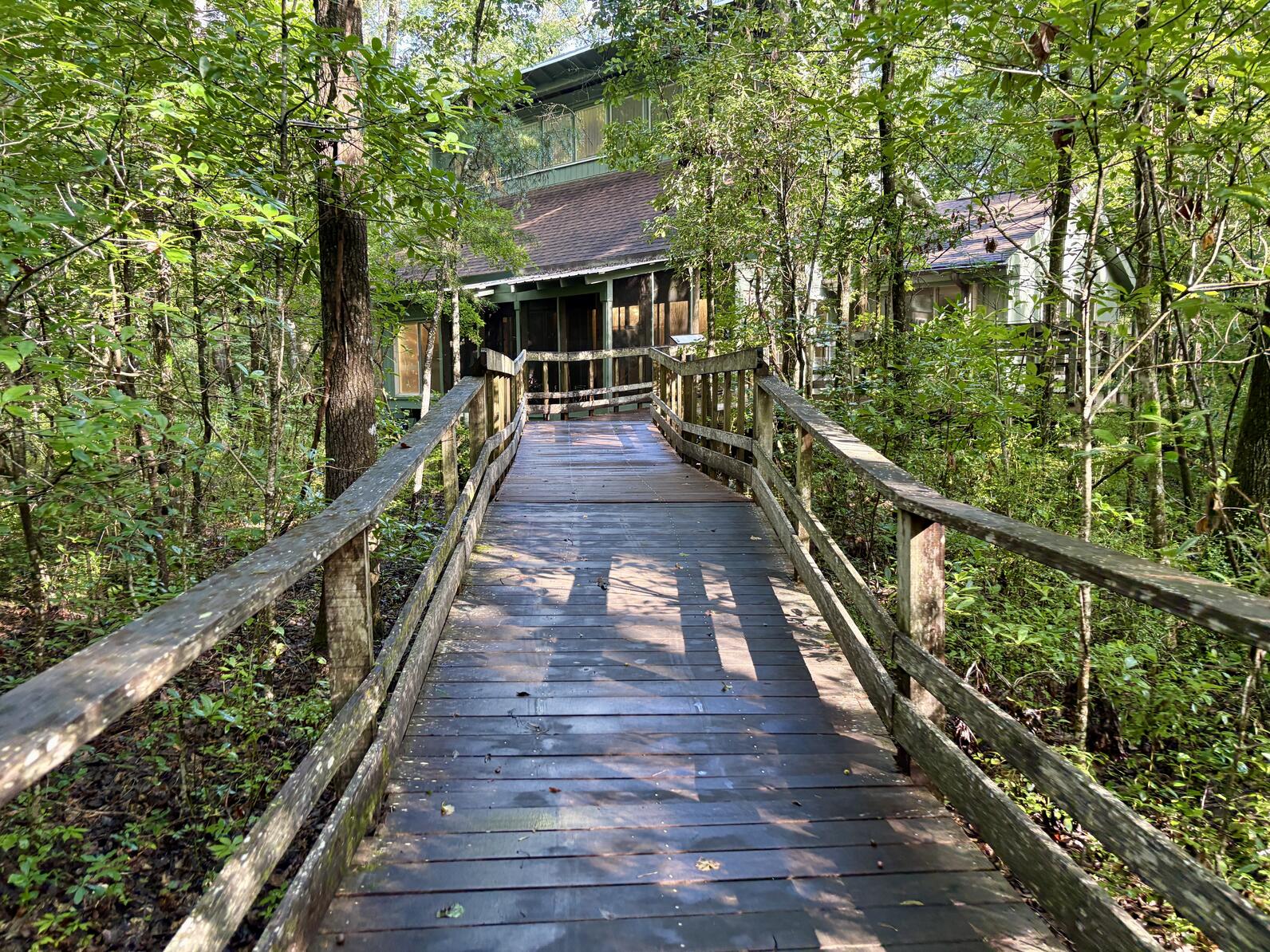
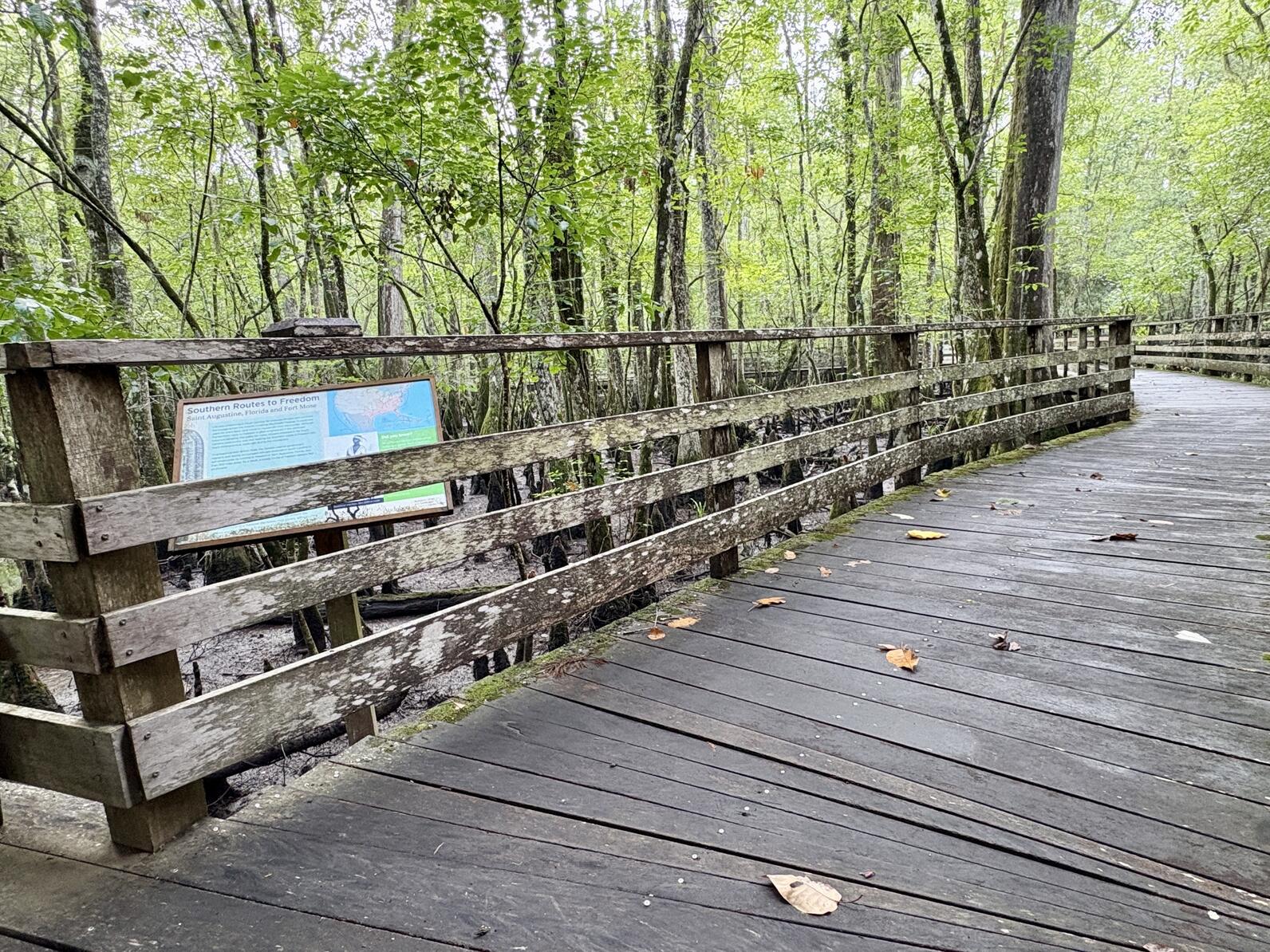
The handrail is 2.8 feet high from the deck. There are three mid-rails along most of the boardwalk, but we maintain an 8 inch gap between the last mid-rail and the handrail. Interpretive signage found along the boardwalk can be viewed from above or below the handrail.
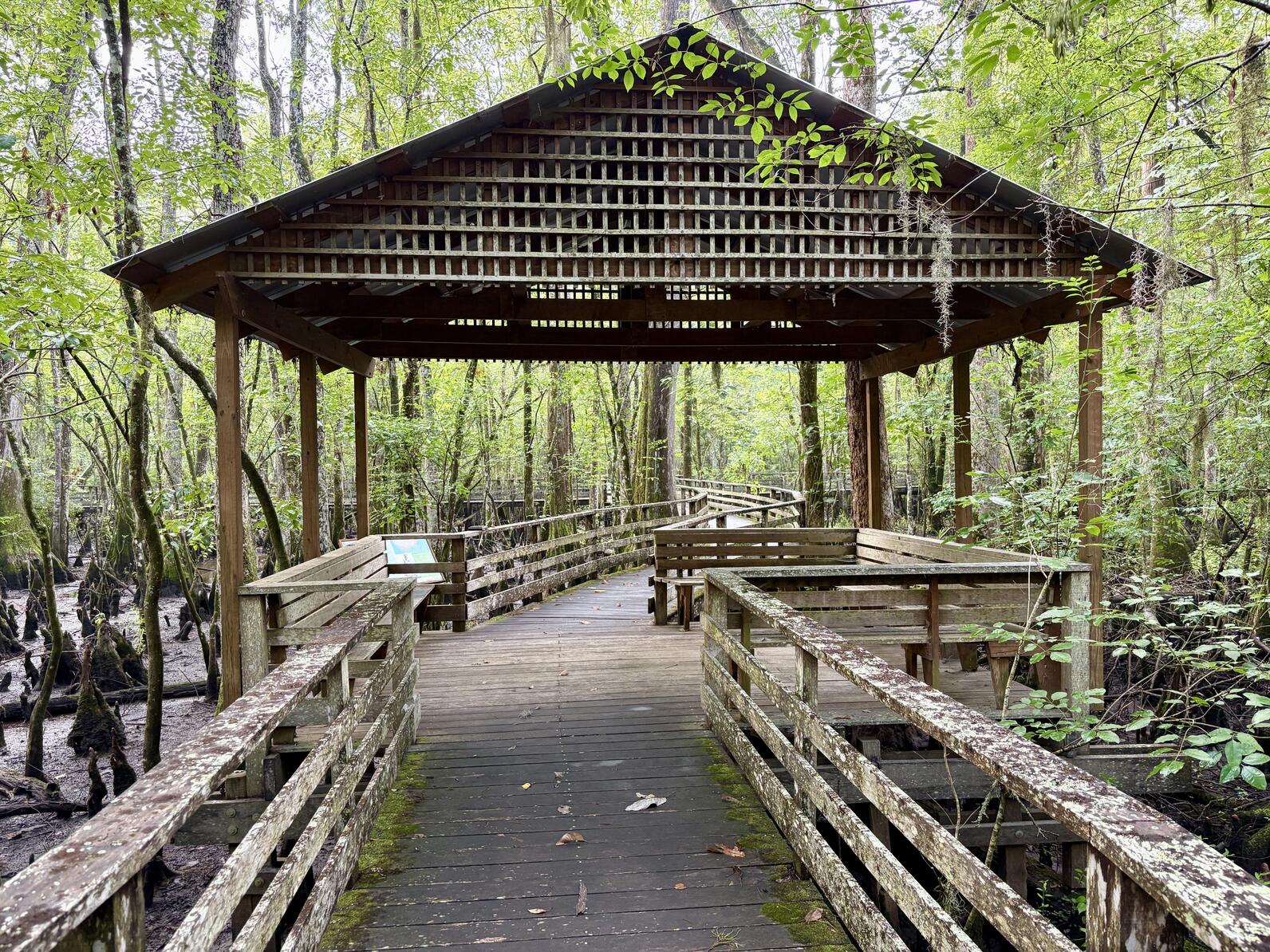
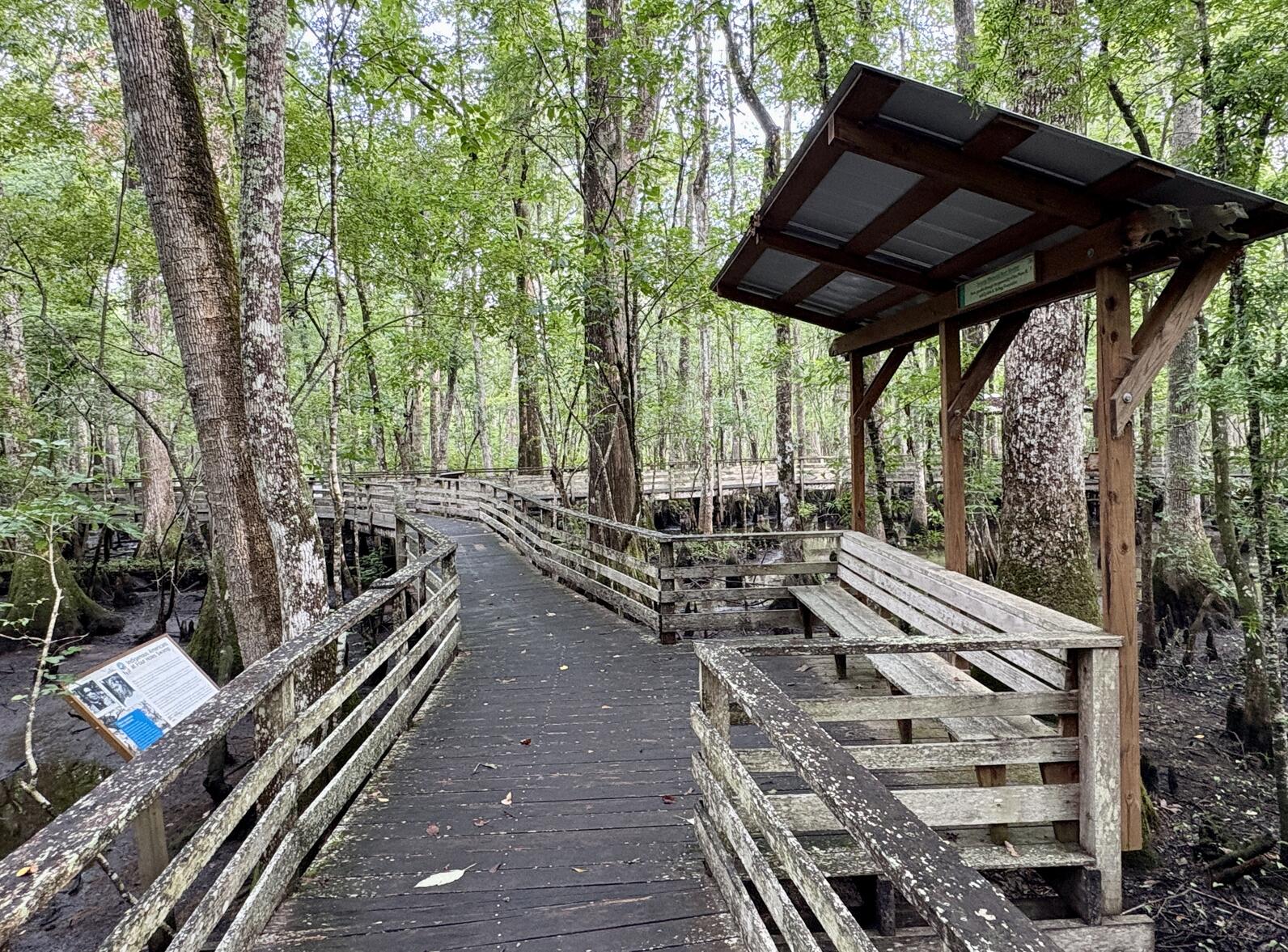
There are two large covered shelters and six additional smaller covered rest shelters with seating along the boardwalk. No rest shelter is more than 1000' (or 1/5 of a mile) from another.
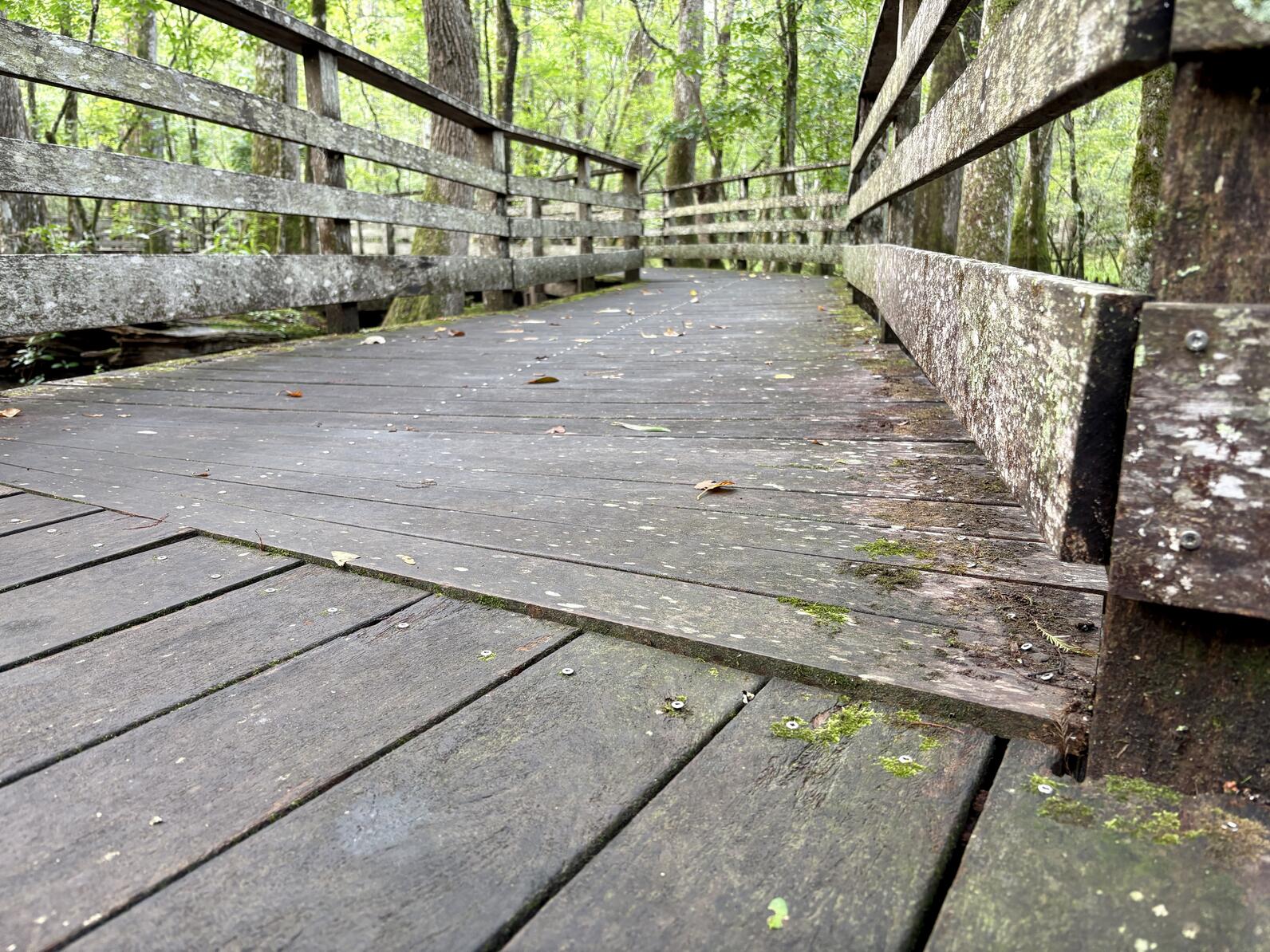
Staff regularly check the boardwalk and remove downed sticks, leaves, and other debris. While the decking is flat, there may be a few boards that are raised slightly higher than others, especially where the boardwalk turns.
Places to Rest
We want your time on the boardwalk to be enjoyable and comfortable. Along the 1.75-mile elevated boardwalk, you'll find numerous spots to pause, enjoy the view, and take a break. Rest areas include benches and rain shelters, as well as benches outside of the visitor center on the back deck before.
Rest locations: #3, #4 (Meeting Tree), #6, #7, #9, #11 (plus the offshoot to the lake), #12, #15, #17, and #20.
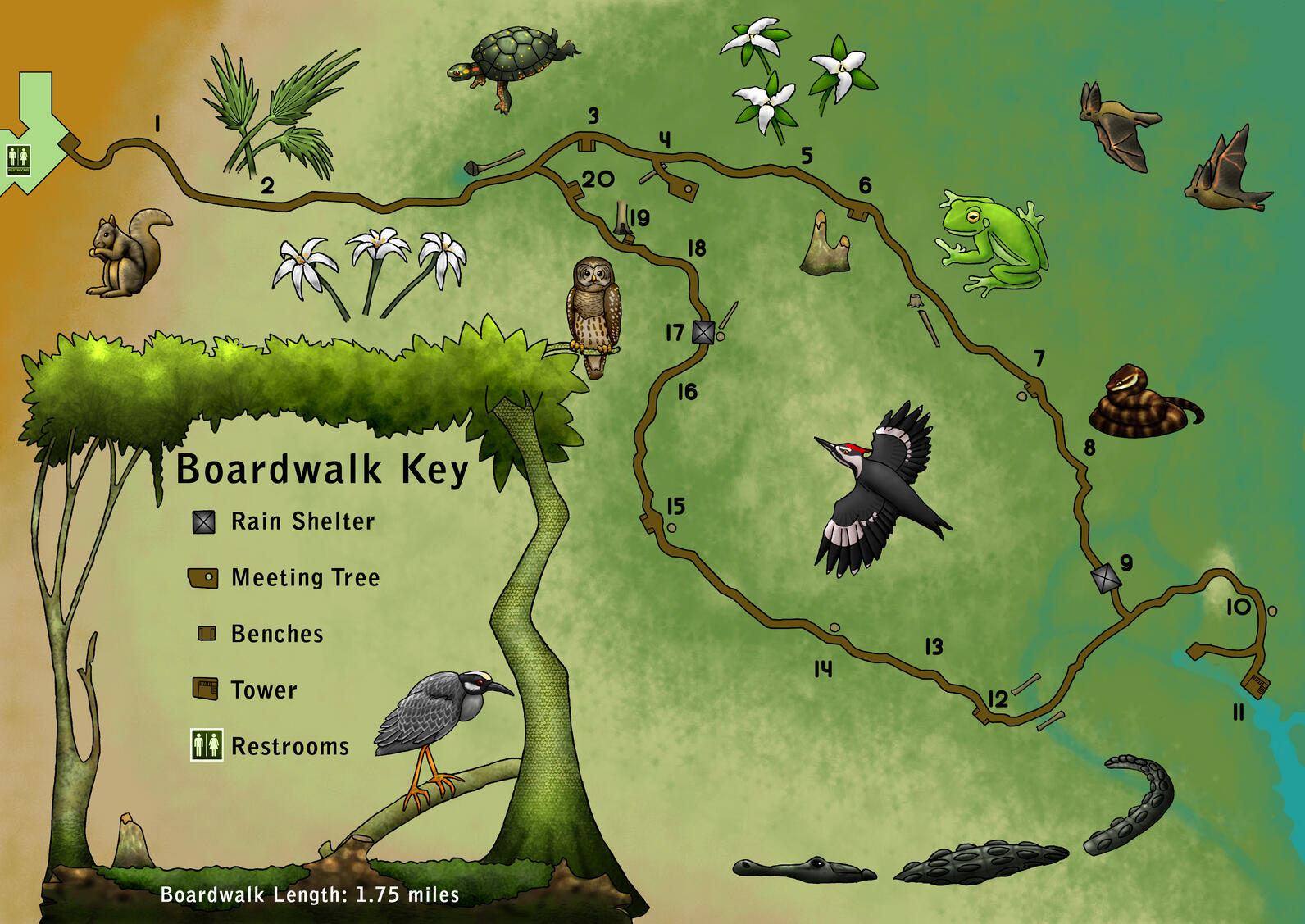
Grassland/Woodland Trail
This trail is not ADA accessible. It involves a combination of dirt paths that may be uneven depending on the season. It is occasionally disced for prescribed burns, which means that the path is basically shredded to reduce plant growth in order to create a barrier that fire cannot cross outside of the intended burn area. The other half of the trail consists of a winding path through the woods that is usually 2 to 3 feet wide with roots and other elements along it. There are also numerous bridges (which you don’t have to use to do most of the trail) that require a step up and down to cross.
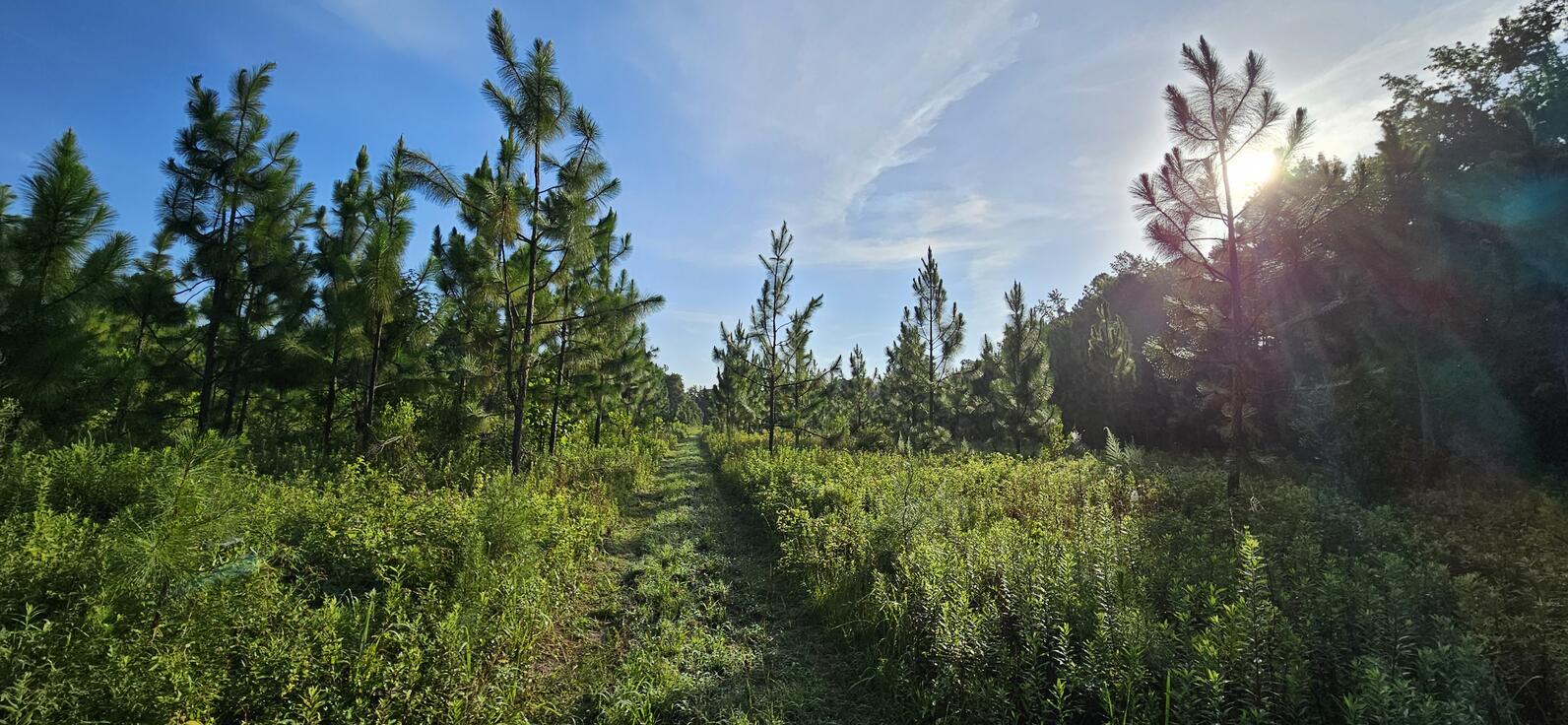
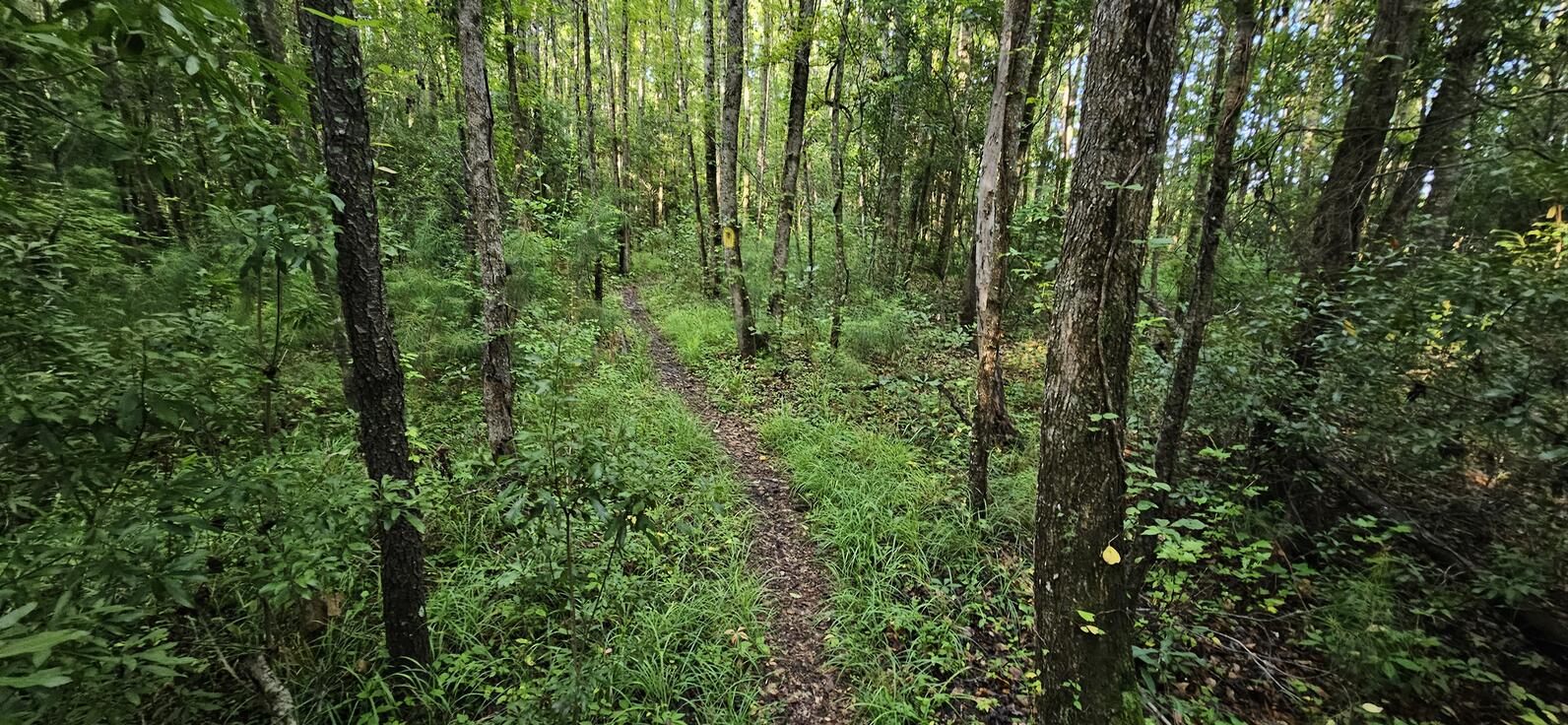
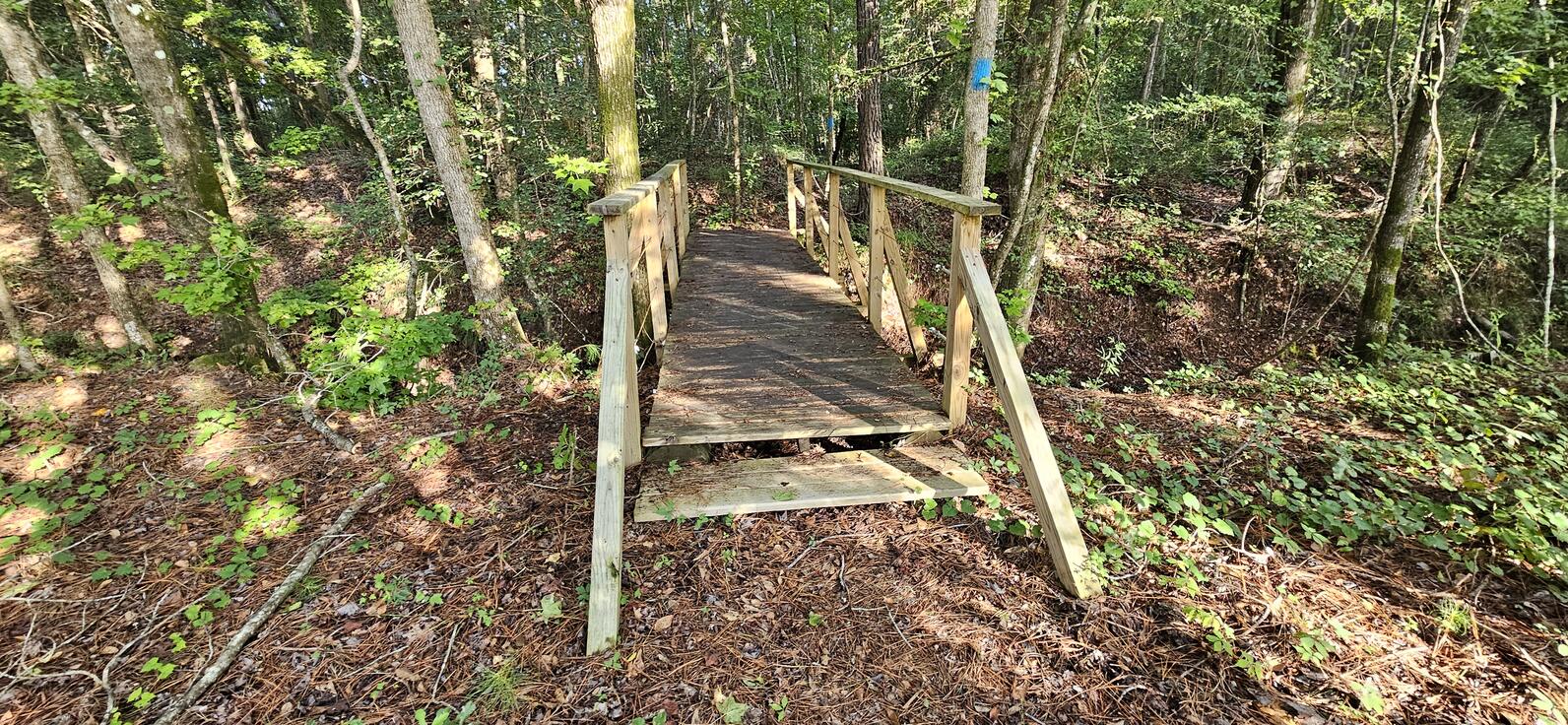
Here is a map of our grassland/woodland trail.
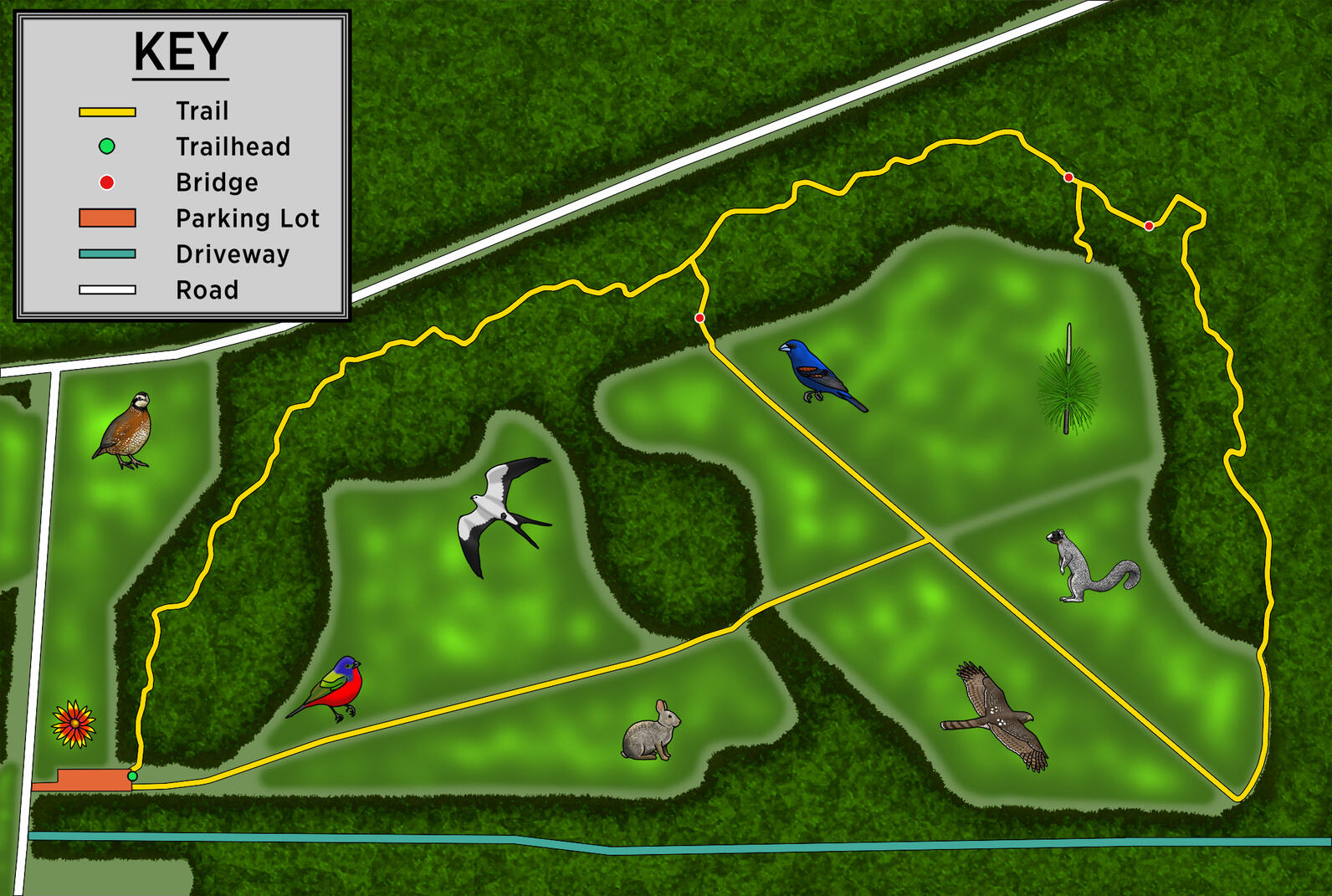
Deaf/low hearing
The boardwalk is a visual splendor of life, with rich greens in the spring, an orange carpet in the fall, and stark whites and black in the winter. It’s very common to see animals like warblers, owls, otters, snakes, and so on, but sometimes you still have to hunt for them as most wild animals survive best by not bringing attention to themselves. Our boardwalk also has a lot of signs detailing the natural and cultural significance of Beidler Forest.
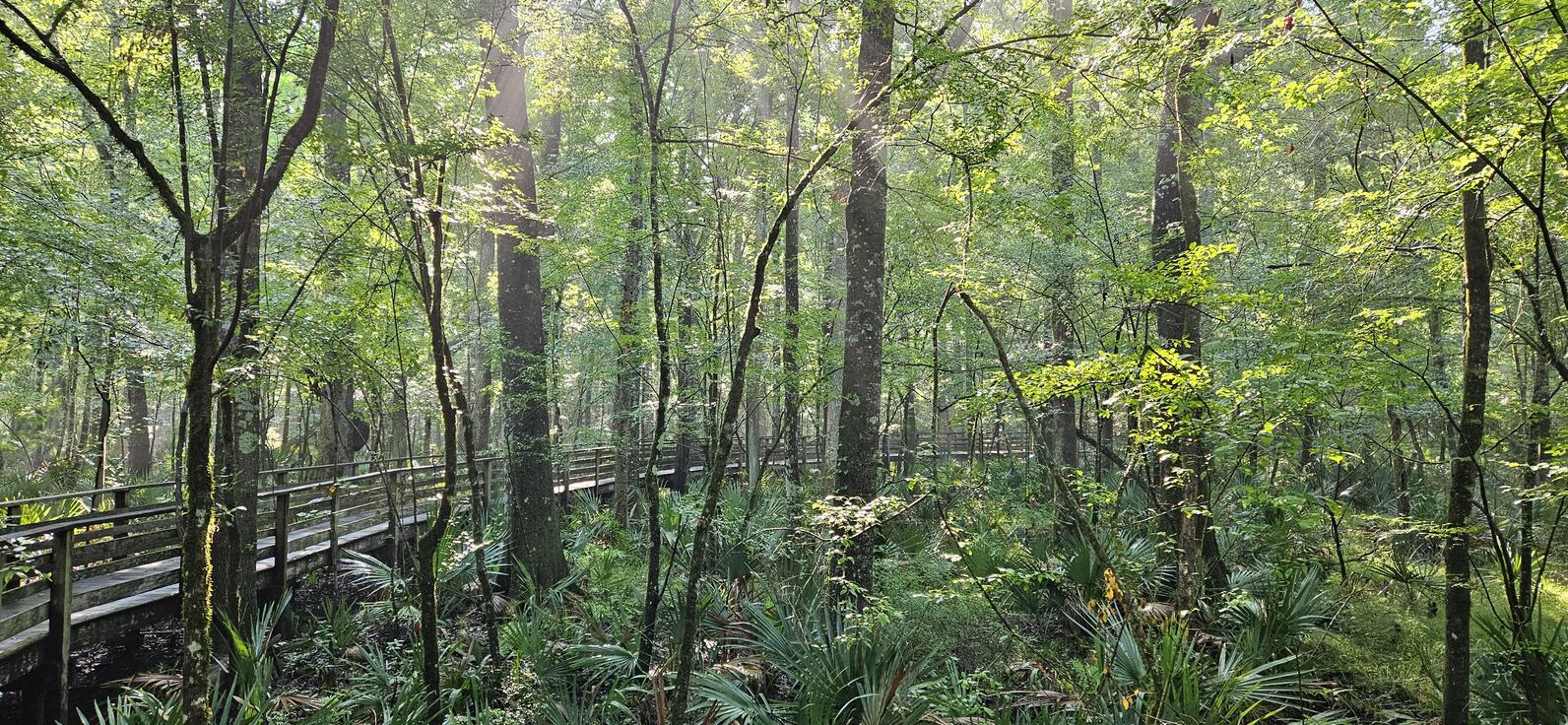
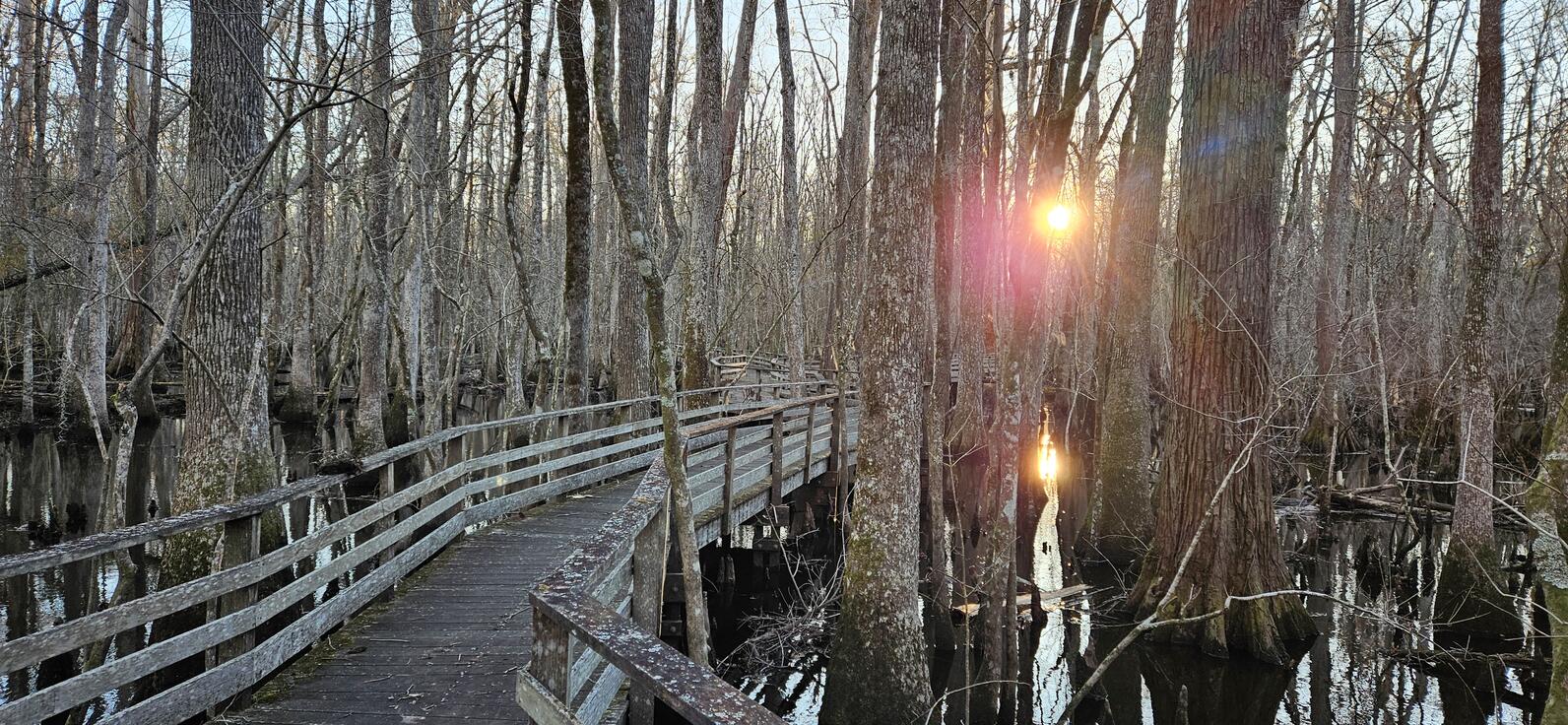
We also recommend the Cornell Lab's Merlin app for detecting birds. Even if you can’t hear them yourself, the app can assist your birding by telling you who’s singing nearby. Then like with any bird search it’s up to you to find them.
Blind/low vision
The boardwalk is rich soundscape whose chorus shifts depending on the season. Even during the day owls can be heard calling to each other, and songbirds like Prothonotary Warblers, Northern Parulas, Carolina Wrens, Yellow-billed Cuckoos, and more compete for attention. In the winter, a silence can settle about the forest, a soft breeze trailing overhead occasionally interrupted by the stark call of a Pileated Woodpecker.
If you have any questions regarding accessibilityaccessibility, please send them to Beidler@audubon.org
Service Animals
We allow service dogs on our boardwalk and other grounds, as classified by the ADA. We do not allow emotional support animals or pets in general, even if they are carried or in a backpack. This is a wildlife sanctuary, so the presence of pets (which are often predators, domesticated or not) are not beneficial in any way to our native wildlife. We love pets, but there are plenty of other places you can go to spend quality time with them outdoors.
Accessibility by Program
Firefly Nights
- Mobility Access: Fully wheelchair-accessible along the boardwalk. Manual and battery-powered wheelchairs welcome and can be reserved in advance.
- Lighting & Sensory Notes: This is a very dark program, only red light flashlights are provided to help you navigate. Even if you are familiar with the boardwalk, the low light can feel disorienting. Inside the Visitor Center at the end of the program, lights remain off and red lights are used to protect the fireflies from artificial light. Staff and volunteers are stationed throughout the event to help guide and assist you if needed.
- Facilities: Restrooms are available before, during, and after the program.
- Other Considerations: Fireflies are extremely sensitive to light, so no flash photography or regular flashlights are permitted. The swamp is alive with nighttime sounds, such as barred owls, bats, and the rustle of armadillos in the leaf litter, which can enhance the experience but may be startling to some. Mosquitoes are generally minimal because of the moving water, but insect repellent is available from staff and volunteers upon request.
- Best for: Visitors comfortable in low-light environments with natural nighttime sounds.
Night Explorations
- Mobility Access: Fully wheelchair-accessible along the boardwalk. Manual and battery-powered wheelchairs welcome and available to reserve a head of your program.
- Lighting & Sensory Notes: This is a nighttime program, but usually scheduled near the full moon, so conditions are brighter than Firefly Nights. Guests are encouraged to let their eyes adjust to the natural darkness, though cell phone flashlights may be used if needed. UV flashlights are often used, and the guide will share special equipment to help guests see nocturnal wildlife and other features of the swamp. Natural nighttime sounds, like owls, bats, and rustling mammals, are part of the experience.
- Facilities: Restrooms are available before and after the program in the Visitor Center (about a 2-hour walk on the boardwalk without restroom access). The Visitor Center is well lit upon arrival and departure, and parking lot lights remain on.
- Other Considerations: Guided, small-group experience with time to pause and observe. Encouraged for visitors comfortable walking in low light for extended periods.
- Best for: Adults and older children (10+) interested in a slower-paced, immersive night experience.
Nocturnal Family Foray
- Mobility Access: Fully wheelchair-accessible along the boardwalk. Manual and battery-powered wheelchairs welcome and available to reserve a head of your program.
- Lighting & Sensory Notes: Held at night, often around the full moon, so it is not completely dark. Families are encouraged to let their eyes adapt to the darkness, but cell phone flashlights may be used if needed. UV flashlights are provided, and guides use special tools to reveal fascinating nocturnal details for kids and adults alike. Expect to hear the calls of barred owls, the flutter of bats, and other swamp wildlife.
- Facilities: Restrooms are available before and after the program in the Visitor Center (approximately 2 hours on the boardwalk without restroom access). The Visitor Center is well lit upon arrival and departure, and parking lot lights remain on.
- Other Considerations: Family-focused, with a more active pace than Night Explorations. Guides are used to working with children and encourage questions and interaction.
- Best for: Families with children age 5+ who are comfortable outdoors at night and enjoy hands-on learning.
Guided Boardwalk & Birding Tours
- Mobility Access: Fully wheelchair-accessible along the boardwalk. Manual and battery-powered wheelchairs welcome.
- Lighting & Sensory Notes: Daytime program with natural sunlight and shaded areas along the boardwalk. Binoculars are frequently used to observe birds, plants, and other wildlife - loaner binoculars are available for free. This program emphasizes both sight and sound, so visitors should be prepared for quiet moments of listening and observation.
- Facilities: Restrooms are available before and after the program in the Visitor Center (approximately 2 hours on the boardwalk without restroom access).
- Other Considerations: Moves at a very slow pace with frequent stops for discussion and observation. Participants are welcome to leave the tour at any time and return to the Visitor Center or explore independently. The program cost includes general admission - no additional ticket purchase required. While suitable for most visitors, the slow pace may not hold the attention of younger children.
- Best for: Adults, older children, and anyone interested in a relaxed, educational walk focused on the sights and sounds of the swamp.
Kayak/Canoe Tours
- Mobility Access: Not wheelchair-accessible. Participants must be able to get in and out of a kayak or canoe independently with little or no assistance. This program is not intended for beginners or those without prior kayaking experience.
- Physical Demand: Moderate to high. The trip lasts around 3 hours on the water, plus time for loading/unloading boats. Requires upper body strength, balance, and endurance. Participants must be able to swim and have some kayaking experience.
- Facilities: Restrooms are available at the Visitor Center before and after the trip. There are no restrooms at the launch site or along the route. Access to the launch site is via a dirt/rock road, which may be muddy or uneven.
- Environmental Conditions: Exposure to sun, heat, and potentially rainy or muddy conditions. Wildlife such as insects, snakes, and alligators may be encountered. No access to food, snacks, or additional water during the trip - participants must bring their own filled water bottle. Refill stations are available at the Visitor Center before departure.
- Other Considerations: Boats, paddles, and life jackets are provided. Participants should dress appropriately for weather and be prepared for wet or muddy conditions. Trip requires driving to an offsite launch location.
- Best for: Experienced paddlers, comfortable in outdoor conditions, and able to manage extended periods on the water without amenities.
How you can help, right now
Boardwalk Tickets
We're open Wednesdays thru Saturdays 9 AM to 5 PM and
Sundays 11 AM to 4 PM.
Beidler Membership
Click here to purchase a membership, which provides free admission for a year and other benefits. We offer both Individual and Family Memberships.
Donate to Beidler Forest
If you wish to support us, please consider donating. 100% of your donation goes back into Beidler Forest.


